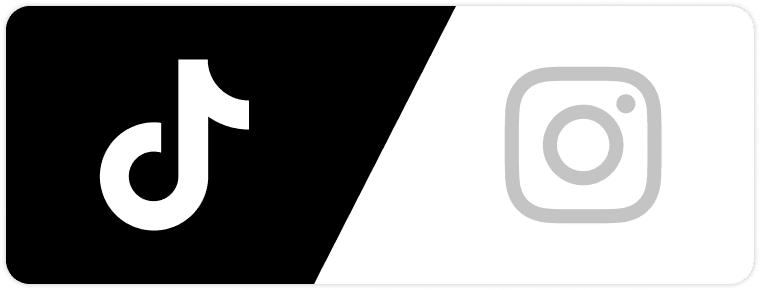As workplaces evolve—becoming more digital, distributed, and data-driven— employee monitoring software is also undergoing a transformation. What once consisted of basic time tracking and activity logs is now being replaced (and enhanced) by AI, automation, and predictive analytics.
This shift isn’t just about keeping tabs on employees. It’s about creating smarter systems that help organizations optimize productivity, support team well-being, and make better-informed decisions—all while reducing the need for micromanagement.
In this article, we explore the cutting-edge trends shaping the future of employee monitoring software, and how AI-powered tools are revolutionizing performance tracking and employee support.
From Reactive to Proactive: The Role of AI in Monitoring
Traditional employee monitoring software tools were mostly reactive, offering data that managers could only review after the fact. This limited visibility often led to delayed responses to productivity issues or employee disengagement. But the rise of AI is transforming that dynamic. Today’s AI-powered monitoring systems are proactive and adaptive, capable of detecting long-term patterns in how people work and identifying subtle behavioral shifts that might signal a problem.
Rather than simply tracking hours or screen activity, AI analyzes trends—like sudden drops in productivity or changes in engagement levels—and can even forecast risks such as burnout. These systems don’t just flag issues; they suggest solutions, whether it’s reassigning tasks to balance workloads or recommending time off before performance declines.
The result is a more nuanced and empathetic approach to workforce management. By processing vast amounts of real-time data, AI doesn’t just observe—it helps employers and employees understand how to work smarter, stay healthier, and maintain consistent performance. This marks a shift from surveillance to support, making employee monitoring softwarea tool for mutual growth rather than control.
Automation Eliminates Manual Oversight
Automation is revolutionizing employee monitoring software by removing the need for constant manual checks and supervision. Managers no longer have to comb through spreadsheets or activity logs—instead, intelligent tools handle data collection and deliver actionable insights automatically.
Automatic Time Tracking Improves Accuracy
Modern monitoring tools can automatically track time based on app usage or keyboard activity. This eliminates the need for manual timesheets and ensures greater accuracy in measuring work hours. Employees can focus on their tasks without the distraction of self-reporting.
Real-Time Prompts Keep Focus On Track
When periods of inactivity are detected, the system can issue gentle reminders or suggest focus modes. These prompts help employees stay mindful of their time and regain concentration, without direct managerial intervention.
Consistent Reporting Builds Fairness
Automated systems can generate regular reports for team leads or HR departments, removing subjectivity from performance tracking. With consistent, data-driven summaries, organizations can make fairer decisions about promotions, workload distribution, or employee support.
Smart Alerts Prevent Bottlenecks
Automation can also flag issues like missed deadlines or overdue tasks. These workflow alerts help managers and employees proactively identify and resolve productivity gaps before they escalate.
Instead of managers manually checking up on each team member, automated employee monitoring software provides real-time dashboards and insights—saving time and boosting efficiency.
The Rise of Predictive Analytics: Seeing Ahead, Not Just Behind
Predictive analytics brings a strategic dimension to employee monitoring software. Instead of simply reporting what happened, it helps forecast what might happen next.
What Predictive Analytics Enables:
- Forecasting employee performance based on task history and patterns
- Anticipating turnover risk using sentiment analysis and engagement signals
- Resource planning by estimating future workloads
- Optimizing scheduling by identifying peak productivity hours
By looking ahead, managers can be more proactive, prevent issues before they escalate, and better allocate resources across teams.
Better Support, Not Just Surveillance
One of the most promising outcomes of AI-driven employee monitoring software is the potential to improve employee support and well-being.
When used ethically, monitoring software can:
- Highlight signs of overwork or digital exhaustion
- Suggest breaks or wellness resources
- Recommend skill-building or training based on performance data
- Support personalized work experiences based on individual rhythms and productivity styles
This marks a dramatic shift from control to care—from managing work to supporting people.
Privacy & Ethics: The Human Side of Data
As employee monitoring software becomes more advanced, ensuring ethical implementation is critical. These best practices help organizations protect trust while still leveraging the benefits of data-driven insights:
Be Transparent About Tracking
Always inform employees about what is being tracked, when, and why. Open communication prevents misunderstandings and reinforces that monitoring is a tool for support—not surveillance.
Set Clear Work-Life Boundaries
Respect employees’ personal time by ensuring monitoring stops outside of work hours. Remote or hybrid setups should not blur the lines between work and home life.
Anonymize Data When Appropriate
Use anonymized insights to identify trends and patterns without exposing individuals. This helps reduce feelings of micromanagement while still driving organizational improvements.
Give Employees Control Over Their Data
Let employees view their own monitoring data. When team members can access their productivity insights, they’re more likely to engage with the system positively and use it for self-improvement.
Use Data for Support, Not Punishment
The goal of employee monitoring software should be to identify ways to help—not penalize—your team. Use insights to prevent burnout, balance workloads, and recognize contributions, not to reprimand or shame.
Make Trust the Foundation
Ethical monitoring is built on mutual respect. If your team trusts the system, they’ll embrace it. Without that trust, even the best tools can create resentment and resistance.
What This Means for Managers and HR
The role of leadership in a data-driven workplace is shifting. Managers don’t need to “watch” people anymore—they need to interpret insights, support autonomy, and coach based on real-time, meaningful data.
HR teams, too, are becoming more strategic, using AI-powered analytics to:
- Improve onboarding and engagement
- Reduce attrition
- Tailor professional development plans
- Monitor team health and cohesion
Employee monitoring software is no longer just for IT—it’s fast becoming essential for modern leadership and people operations.
Conclusion: Smarter Tools for a Smarter Workforce
The future of employee monitoring software is not about surveillance—it’s about insight, support, and smarter ways to work. By embracing AI, automation, and predictive analytics, companies can create environments that promote productivity, reduce burnout, and enable people to perform at their best.
But technology alone isn’t the answer. The real transformation comes from how we use these tools—with transparency, empathy, and a commitment to building better workplaces for everyone.
FAQs
Q: How does AI in monitoring differ from traditional employee tracking?
A: AI doesn’t just collect data—it interprets it. It can recognize trends, predict issues like burnout, and suggest improvements, making it more proactive and supportive.
Q: Is predictive analytics accurate for people management?
A: While no system is perfect, predictive analytics offers strong trend forecasting. It’s most effective when paired with human judgment and regular employee feedback.
Q: Will this kind of monitoring replace managers?
A: No. AI enhances management by handling repetitive tasks and providing insights. It empowers managers to focus on coaching and decision-making—not micromanagement.





